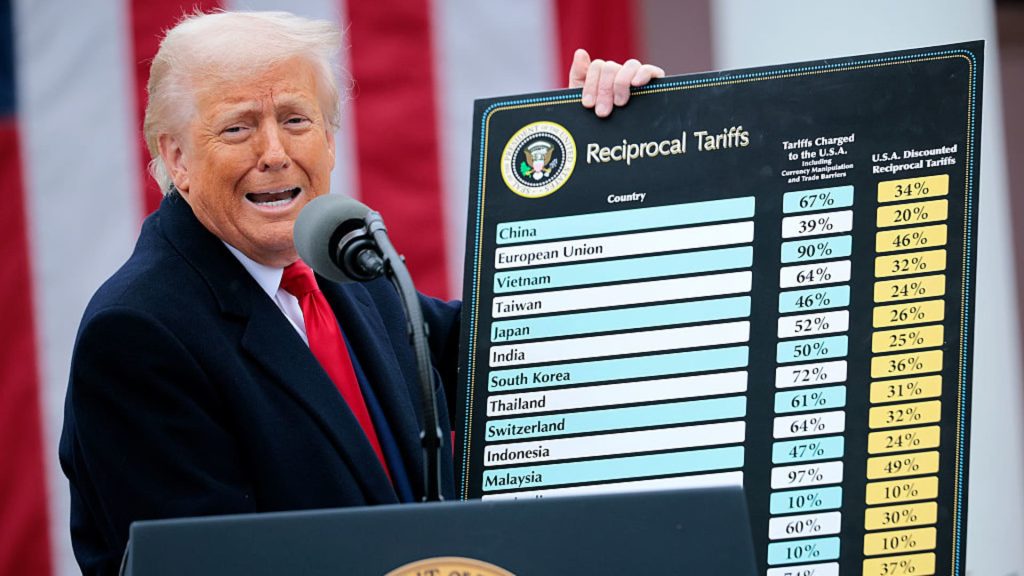U.S. President Donald Trump holds up a chart while speaking during a “Make America Wealthy Again” trade announcement on April 2, 2025 in Washington, DC.
Chip Somodevilla | Getty Images News | Getty Images
A little-known federal court is set to hear arguments Tuesday in a case challenging President Donald Trump’s tariffs, putting a key plank of his economic agenda under the legal microscope for the first time.
A panel of three judges at the U.S. Court of International Trade will consider whether Trump exceeded his power when he enacted steep tariffs on more than 180 countries and territories last month.
If they side with the plaintiffs, the judges could sharply rein in Trump’s ability to unilaterally impose import taxes, one of his preferred methods of flexing executive power.
Audio of the arguments in the Manhattan courtroom will be livestreamed starting at 11 a.m. ET.
The lawsuit was filed in mid-April by five domestic businesses that say they rely on imported goods not reasonably available to them in the U.S.
Their legal complaint argues that the International Emergency Economic Powers Act — the 1977 law Trump invoked in early April to impose his worldwide “reciprocal” tariffs — does not actually give the president the power to issue those sweeping duties.
The law gives the president a range of economic powers in a national emergency, including to regulate or ban imports, though it does not explicitly mention tariffs, according to the Congressional Research Service.
The “national emergency” Trump declared to justify his use of that law, known as IEEPA, is “a figment of his own imagination,” the plaintiffs argue.
“Trade deficits, which have persisted for decades without causing economic harm, are not an emergency,” their complaint says.
The plaintiffs want the court to block Trump’s April 2 executive order imposing the tariffs. They also seek damages, including “the amount of any tariffs collected by Defendants pursuant to the challenged orders.”
The Department of Justice argues that IEEPA “clearly” authorizes the president to impose tariffs.
“Through IEEPA, Congress lawfully delegated to the President authority to regulate importation through the imposition of tariffs under specified circumstances,” lawyers for the DOJ write in an opposition brief.
The Liberty Justice Center, the libertarian nonprofit representing the plaintiffs, notes in the suit that the U.S. Constitution gives Congress, not the president, the power to levy and collect taxes.
Congress, over the years, has enacted laws giving the president some tariff powers. But the lawsuit wants the court to declare that, “if Congress has granted the President unilateral authority to impose global tariffs of any amount at his whim, it is an unconstitutional delegation of legislative power.”
A protectionist with a special interest in cutting deals, Trump has long praised tariffs as a key tool for negotiating with other countries and collecting federal revenue.
But he has at least temporarily walked back many of his tariffs amid highly volatile markets and increasing concerns from business owners and consumers.
A week after announcing the reciprocal tariffs, he cut the rates down to a blanket 10% for 90 days for most countries except China.
On Monday, the U.S. and China agreed to their own 90-day tariff pause while trade negotiations continue.
This is developing news. Please check back for updates.


